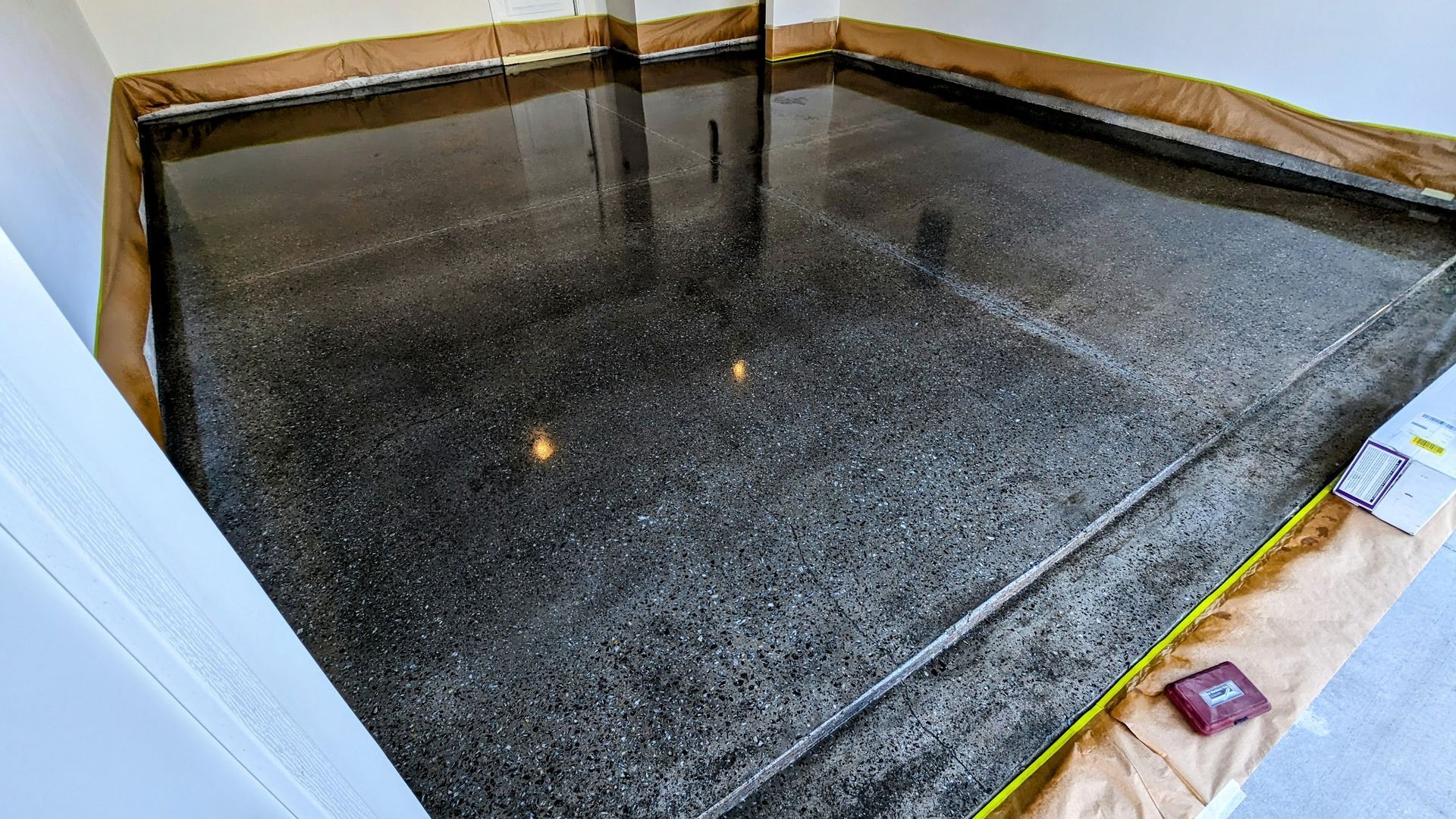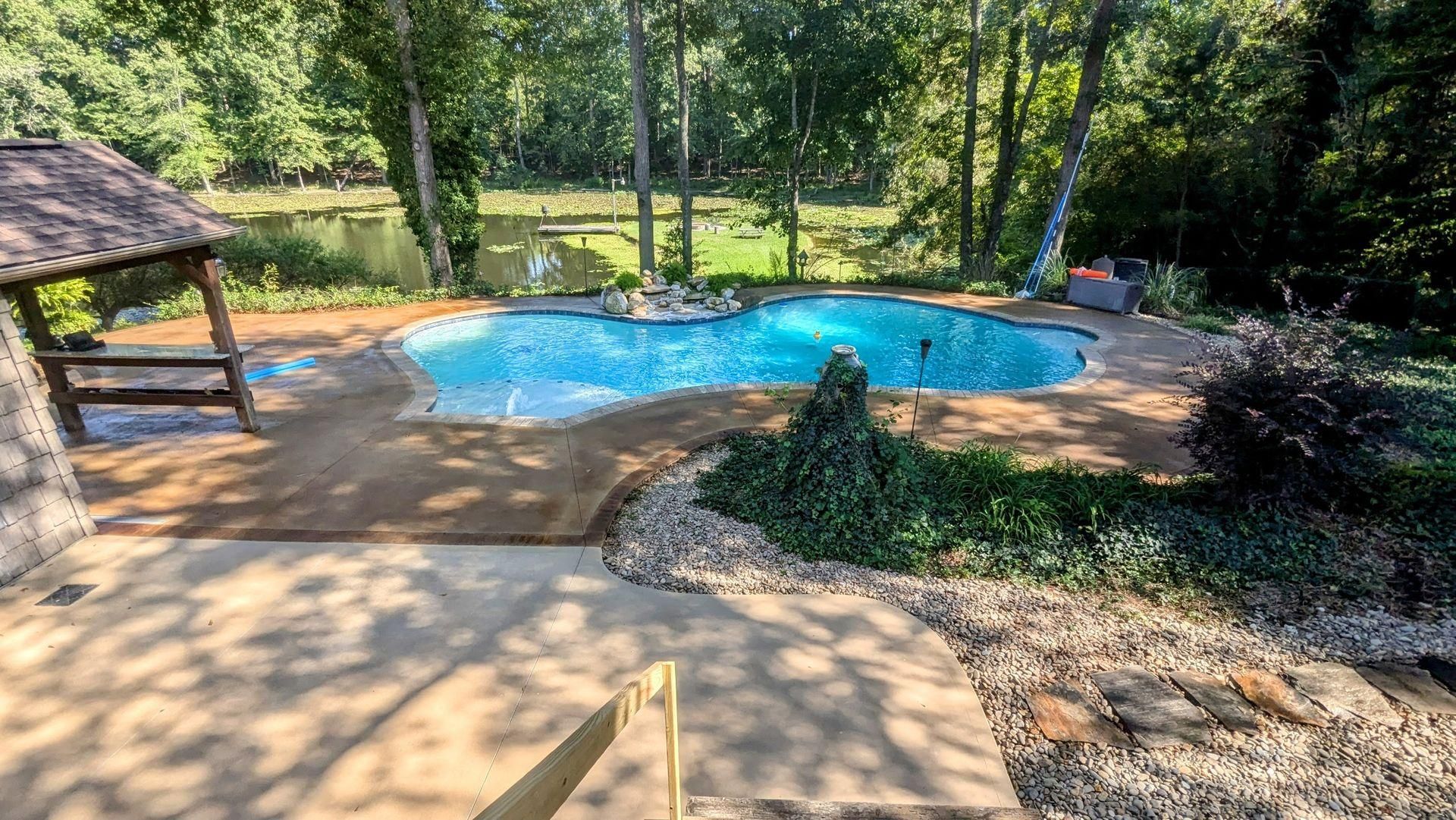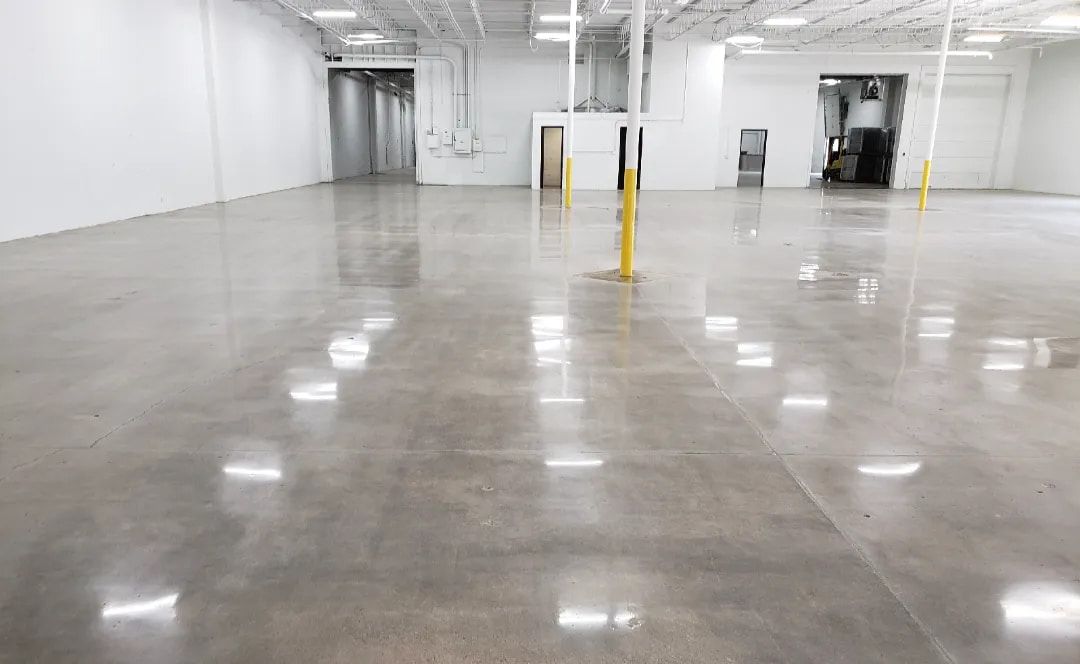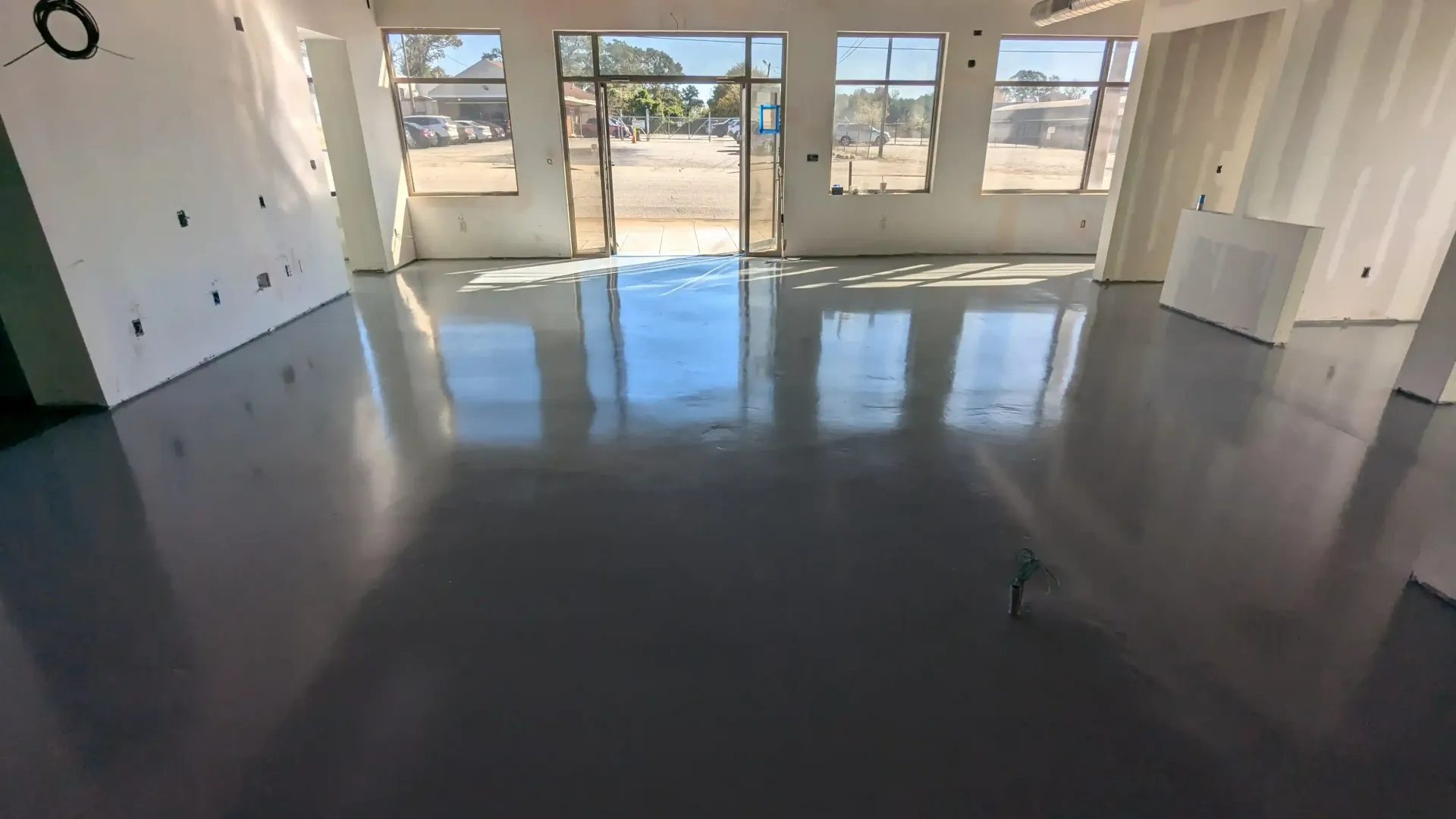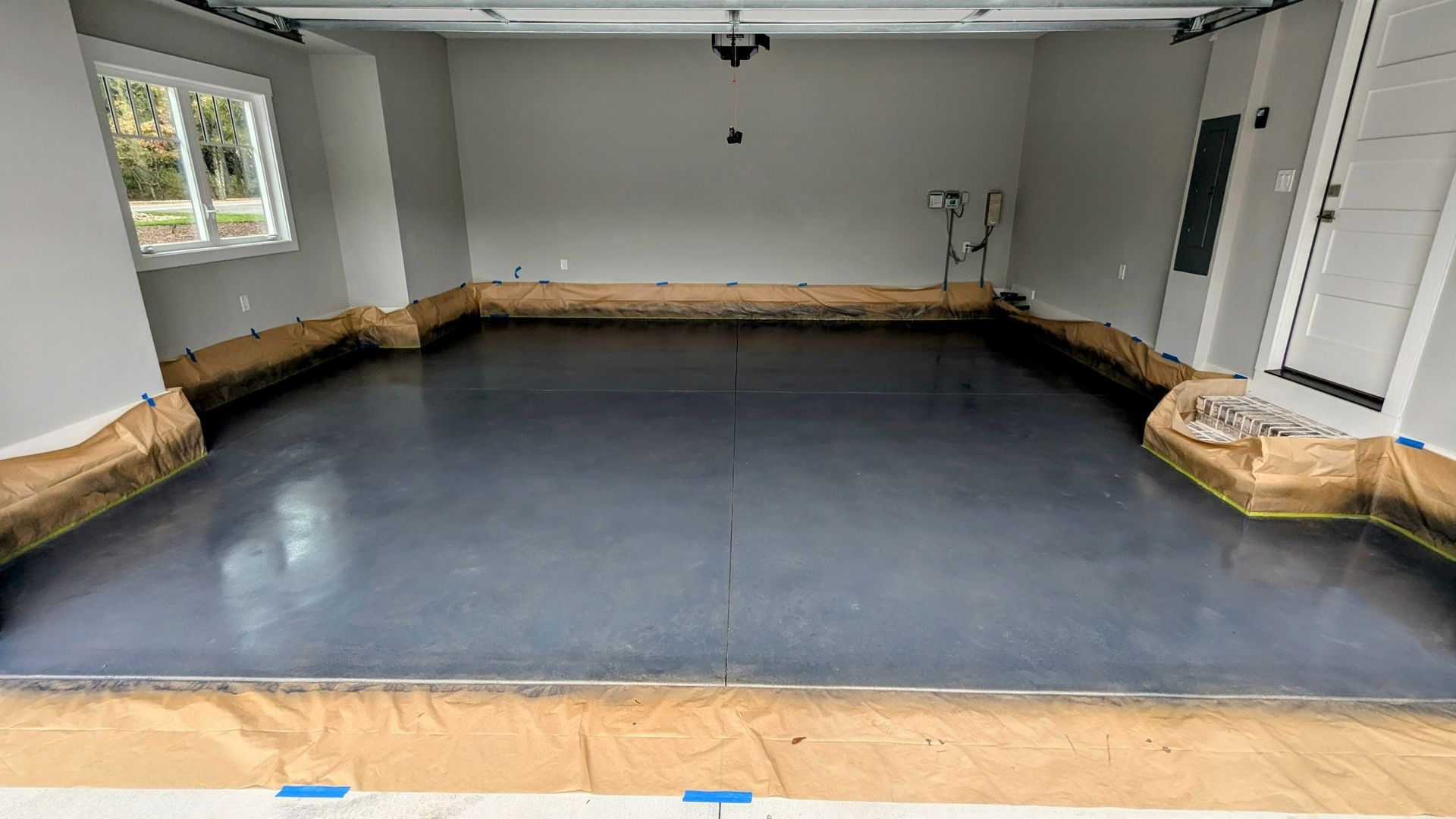Unlocking Durability: Acid-Based Concrete Staining Guide
Want concrete that looks great and lasts? Acid staining penetrates the surface, creating deep, rich colors that won’t peel or fade, and every floor turns out unique. It’s a simple way to add style and durability, but getting the best results takes a little know-how. From picking the right color to sealing it properly, this guide will walk you through everything you need to get it right.
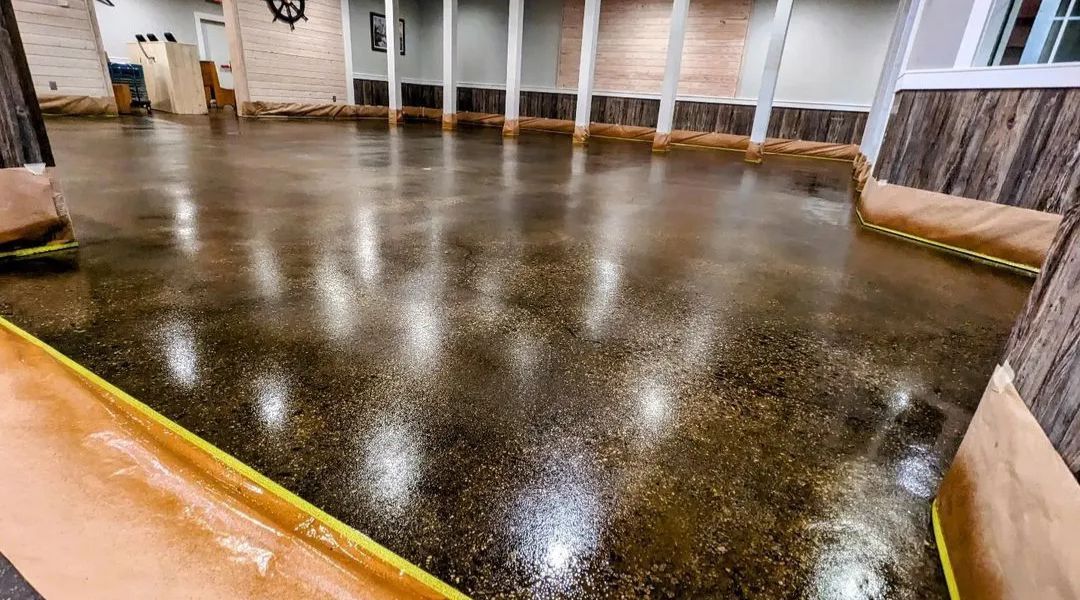
How Acid-Based Concrete Staining Works
Acid-based concrete stain reacts with the minerals in the concrete, like calcium and lime. Unlike regular paint that just sits on top, the stain penetrates into the surface, creating beautiful, natural colors. This chemical reaction results in a unique, variegated effect on each floor. Every time you use it, the colors turn out a little different, giving your concrete a one-of-a-kind look.
Benefits of Acid-Based Concrete Staining
Here's why acid staining stands out:
- Durability: The stain bonds with the concrete, making it stronger and resistant to wear and tear. Your floors will last for years, even in high-traffic areas.
- Aesthetic Appeal: It creates a deep, natural look that can mimic stone or marble. The rich, earthy tones give each surface a unique, one-of-a-kind finish.
- Low Maintenance: After staining, your concrete is easy to clean with just a mop or light sweep. No need for special treatments or frequent touch-ups.
- Versatility: Acid staining works great on all kinds of concrete surfaces—floors, patios, driveways, and outdoor walkways. It’s perfect for both indoor and outdoor spaces, offering endless design possibilities.
The Professional Acid Staining Process
Acid staining requires professional expertise to achieve a smooth, even, and long-lasting finish.
Here's an overview of the process a skilled contractor will follow:
Step 1: Preparation
The concrete must be thoroughly cleaned and prepped to ensure the stain adheres properly. Any existing coatings or debris must be removed, and in some cases, the surface may need to be etched for better absorption.
Step 2: Application
Experienced professionals will apply the acid stain evenly, working in controlled sections to ensure the color is uniform. They understand how the stain reacts with different concrete surfaces and adjust their technique accordingly.
Step 3: Neutralizing and Sealing
After the stain has dried, a neutralizing solution is applied to stop the chemical reaction. The concrete is then rinsed and dried before a protective sealer is applied. A professional will ensure the sealer is applied in two coats to protect the surface and give it a polished finish.
Step 4: Curing and Drying
The concrete must be allowed to cure for a minimum of 24 hours before the sealing process, ensuring any remaining moisture evaporates.
Choosing the Right Color for Your Concrete Stain
Choosing the right color for your concrete stain can make a big difference in how your space looks. There are plenty of color options to pick from, like warm browns, reds, and tans, or cooler shades like blues and greens. Just keep in mind that the final color might look a little different depending on the concrete’s makeup, like how much lime or minerals are in it.
Here’s how to pick the best color for your project:
- For a Warm, Natural Look: Earthy tones like browns, reds, and terracotta are perfect for a rustic or cozy feel. These colors are great for places like living rooms, kitchens, or outdoor patios.
- For a Bright, Modern Feel: If you want something bold, go for colors like blues, greens, or even more vibrant shades. These work well in modern spaces, like offices or trendy areas.
Remember, every concrete surface can react a little differently with the stain, so it’s always smart to test a small spot first to see how it looks.
Maintenance Tips to Extend the Life of Acid-Stained Concrete
Acid-stained concrete is really easy to take care of, and with just a little attention, it can last a long time. To clean it, just sweep or vacuum up dirt and debris regularly. For a deeper clean, use a damp mop with a gentle, pH-neutral cleaner. Avoid harsh chemicals that can damage the stain. Sealing is important too—apply a fresh coat of sealer every 1-3 years to protect the surface and keep it looking shiny.
Here are a few simple tips to keep your concrete looking great:
- Touch up worn areas: If there’s heavy foot traffic, you might see some fading. A quick touch-up with sealer or stain will bring it back to life.
- Clean up spills fast: For outdoor concrete or areas with a lot of use, clean spills right away to prevent stains.
- Use rugs or mats: In busy areas, placing rugs or mats can help protect your concrete from wear and tear.
Why Hiring a Professional is the Best Option for Acid Staining
While acid staining may seem simple, achieving a flawless, long-lasting finish takes skill and experience. A professional contractor brings the following benefits:
- Expert Preparation: A pro ensures the surface is properly cleaned, prepped, and etched for optimal stain absorption.
- Even Application: Professionals know how to apply the stain evenly, ensuring that the color develops consistently across the entire surface.
- Proper Sealing: Correct sealing is essential to protect the stained surface and maintain its appearance over time. A professional will apply the appropriate type and number of sealers for your specific needs.
- Long-Term Results: Professionals have the right tools, techniques, and knowledge to ensure the stain and sealer adhere properly, making sure your surface lasts for many years.
Frequently Asked Questions
What Happens If You Don’t Neutralize Acid Stain?
If you skip neutralizing, the sealer won’t stick properly and may start peeling, forcing you to remove and reapply it. Leftover residue can also cause streaks or uneven color.
Do You Need to Etch New Concrete Before Acid Staining?
Yes! Etching or grinding is a must. It helps the stain soak in and ensures the final finish sticks properly.
How Long Should Acid Stain Sit on Concrete?
The stain needs to stay on the surface for at least four hours to fully react with the concrete. It can remain wet or dry during this time, depending on the effect you want.
What’s the Difference Between Acid Stain and Concrete Stain?
Acid stain reacts with the lime in concrete to create a natural, long-lasting color. Concrete dyes, on the other hand, provide a more transparent tint. Both are great alternatives to tile, wood, or carpet.
How Do You Clean Concrete Before Acid Staining?
For paint or adhesives, use Xylene or a suitable remover. For sticky substances like glue or wax, try a citrus-based stripper. If working outdoors, a power washer or hose can help with rinsing.
Can You Dilute Acid Stain With Water?
Yes! Adding water lightens the color, while using less water results in a deeper, richer tone.
Achieving Long-Lasting, Beautiful Concrete with Professional Acid Staining
Acid staining provides a durable, low-maintenance finish that enhances the look of your concrete surfaces. Proper preparation and sealing are essential for lasting results, and hiring professionals ensures everything is done right. At Zachary Daniel Concrete, we specialize in concrete staining and a range of other services including coatings, polishing, epoxy flooring, and more.
Contact us today and let us enhance your concrete surfaces with a flawless finish that will stand the test of time!
